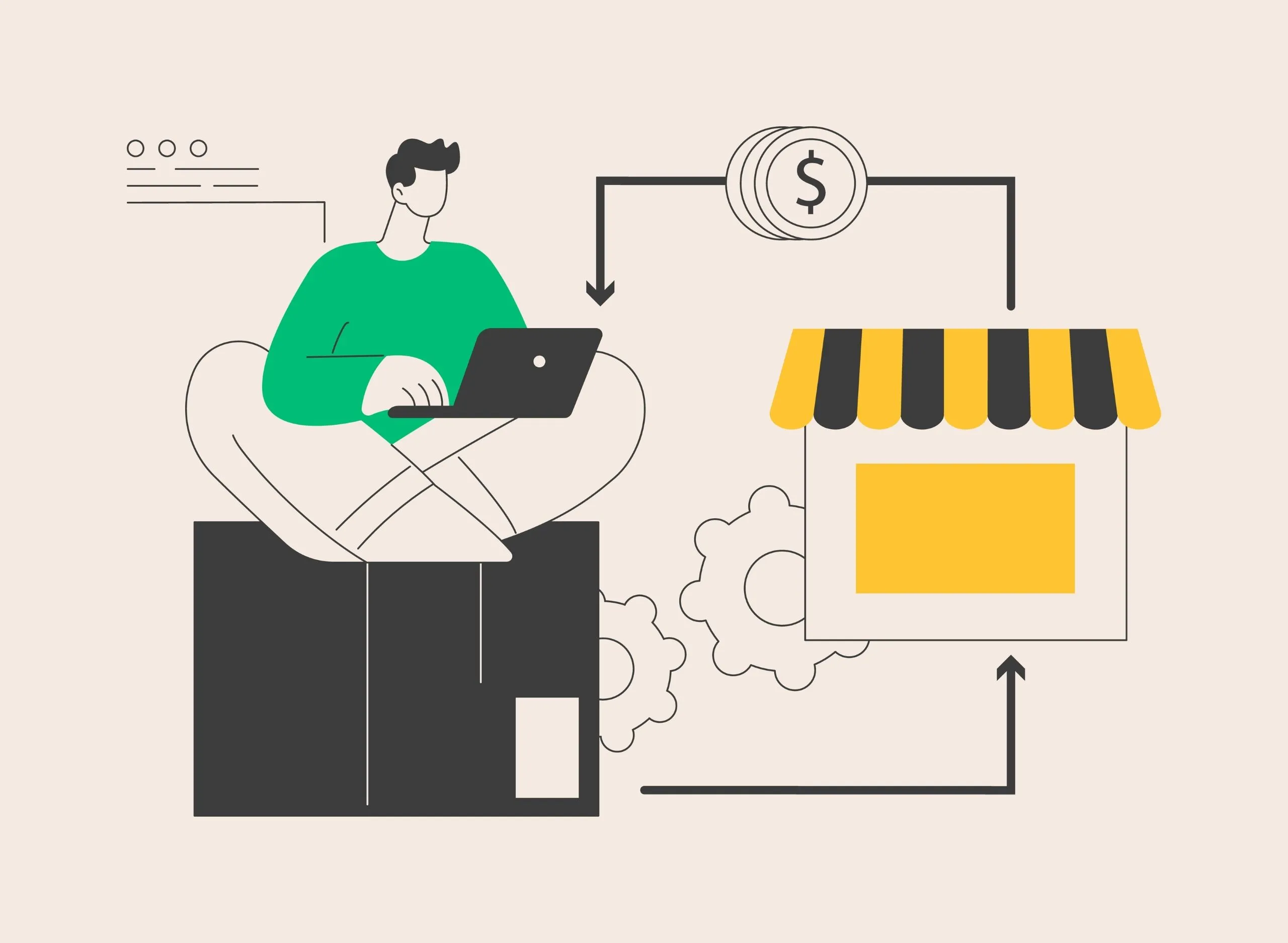Direct to Consumer (DTC) is a business model that refers to manufacturers or brands selling directly to consumers without intermediaries. In the traditional retail model, products reach the consumer through distributors, wholesalers, and retailers, whereas in the DTC model, all of these intermediaries are eliminated. This model allows brands to establish direct contact with customers, enabling them to offer a stronger brand experience.
Advantages of the DTC Business Model
The DTC business model offers various advantages for businesses and consumers. The most prominent ones are as follows:
1.Higher Profitability
Since intermediaries are eliminated, brands can reduce costs and increase profit margins by selling directly to consumers. In traditional retail, distributors and intermediary companies add their own commissions to product prices. In the DTC model, these additional costs are removed, and brands gain more flexibility in pricing.
2.Stronger Brand Control
Brands have full control over the presentation, pricing, and marketing strategies of their products. This allows them to better manage consumer perception, build customer loyalty, and increase brand value. In traditional retail, stores or third-party sellers may decide how products are displayed or marketed, whereas in the DTC model, the brand manages all processes itself.
3.Better Customer Experience
By communicating directly with consumers, brands can provide better customer support and create personalized shopping experiences. Strategies such as customized product recommendations, exclusive discounts, and one-on-one customer service can increase customer satisfaction. Additionally, receiving customer feedback directly makes it easier to improve products and services.
4.Data-Driven Strategies
Brands that sell directly can collect customer data firsthand and better optimize their marketing strategies. Data such as purchasing habits, preferred products, and customer behavior can be analyzed to create more effective advertising campaigns targeted at specific audiences. In addition, customer needs can be better understood through A/B testing and direct surveys, allowing for more targeted innovations.
Disadvantages of the DTC Business Model
The DTC model also comes with certain challenges. Here are the most prominent ones:
1.Logistical and Operational Challenges
In the DTC business model, brands must manage all logistics processes themselves. Operational tasks such as inventory tracking, order management, packaging, and shipping can become highly complex for brands with large-scale sales. For brands serving a wide customer base, issues like warehouse management, shipping costs, and return processes require serious planning. To manage these processes efficiently, a strong logistics infrastructure and automation systems are necessary.
2.Marketing and Advertising Costs
In traditional retail, stores or third-party sellers present brands’ products to consumers, whereas in the DTC model, brands must reach consumers directly. This requires increased investment in digital marketing and advertising. Strategies such as Google Ads, social media advertising, influencer collaborations, and content marketing can create significant costs for brands. In highly competitive industries, continuous marketing investment is necessary to acquire customers.
3.Customer Acquisition Challenges
DTC brands must build their customer base from scratch. In the traditional retail model, it’s easier to reach customers through stores, chain markets, or online marketplaces. However, in the DTC model, brands need to create their own customer base and foster loyalty. It can take time for a new brand to gain recognition and earn trust. The initial customer acquisition process should typically be supported by incentives such as promotions, free trials, and loyalty programs.
4.Return and Customer Service Management
In the DTC business model, customer service is entirely the brand’s responsibility. Product returns, exchanges, complaints, and technical support processes must be managed directly by the brand. In the traditional retail model, stores or third-party sellers can handle these processes, whereas DTC brands must carry out all customer support operations through their own systems. This can both increase operational costs and directly impact customer satisfaction.
5.Differences Between D2C and B2C
Although the D2C (Direct to Consumer) and B2C (Business to Consumer) business models may seem similar, they have some key differences. Let’s look at the distinctions in areas such as sales channels, customer connection, profitability, and customer data:
Sales Channel: In the D2C model, the manufacturer sells directly to the consumer, while in the B2C model, the manufacturer reaches the consumer through retailers or intermediaries.
Customer Connection: In the D2C model, the brand communicates directly with the customer, whereas in the B2C model, the connection between the brand and the customer is established through intermediaries.
Profitability: The D2C model offers higher profit margins because there are no intermediaries. In the B2C model, intermediaries take commissions, which can lower the profit margin.
Customer Data: In the D2C model, customer data is collected and analyzed directly, while in the B2C model, customer data is generally managed by retailers.
Marketing Strategy: In the D2C model, digital marketing, social media, and direct customer communication are prioritized. In the B2C model, retail stores, advertising campaigns, and a wide distribution network are used.
Logistics Management: In the D2C model, the brand manages all logistics processes itself, whereas in the B2C model, logistics and distribution are generally handled by third parties.
The Direct to Consumer (DTC) business model enables brands to reach consumers without intermediaries, helping them achieve higher profit margins, gain customer data, and build a strong brand image. However, to succeed, it is essential to develop the right strategies, focus on the customer experience, and manage logistics processes effectively. For brands looking to gain a competitive advantage in e-commerce, the DTC model presents a significant opportunity.





